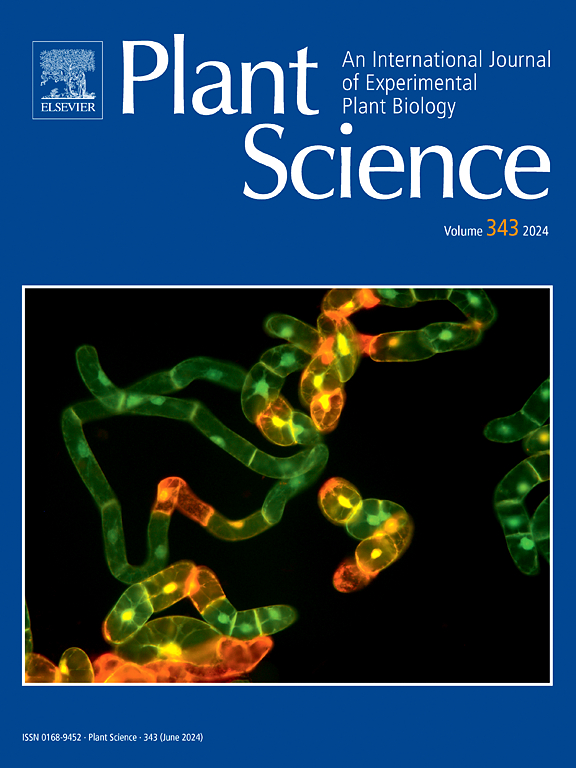The MYB transcription factor ClPC modulates petal color and chlorophyll accumulation in watermelon
IF 4.2
2区 生物学
Q2 BIOCHEMISTRY & MOLECULAR BIOLOGY
引用次数: 0
Abstract
During the pre-anthesis stage, high chlorophyll levels in petals result in a green hue in many plants. Upon anthesis, chlorophyll degradation uncovers other pigments, thereby influencing pollinator attraction and reproductive success in insect-pollinated crops. In the watermelon accession WM109, a novel petal phenotype characterized by a yellow-green hue was observed, significantly different from the canonical yellow petal phenotype typically associated with this species. Genetic analysis using F2 populations revealed that this yellow-green petal trait is controlled by a single recessive gene. By screening SSR primer pairs with the constructed yellow and yellow-green DNA pools and genotyping F2 individuals, the responsible gene was mapped to a 139.7 kb interval on watermelon chromosome 11, containing two candidate genes. Through sequence analysis, expression profiling, and functional verification of these candidates, a gene encoding a MYB transcription factor with a base insertion was identified as the key determinant of this unusual phenotype, which is characterized by elevated chlorophyll levels and increased chloroplast density. Given the limited current knowledge regarding the relationship between MYB transcription factors and chlorophyll biosynthesis, these findings enhance our understanding of the molecular mechanisms underlying chlorophyll production.
MYB转录因子ClPC调控西瓜花瓣颜色和叶绿素积累
在开花前阶段,花瓣中的高叶绿素水平导致许多植物的绿色色调。开花后,叶绿素降解使其他色素暴露出来,从而影响昆虫授粉作物对传粉者的吸引力和繁殖成功率。在西瓜品种WM109中,观察到一种新的黄绿色花瓣表型,与该品种典型的黄色花瓣表型显著不同。F2群体遗传分析表明,黄绿色花瓣性状受单隐性基因控制。利用构建的黄色和黄绿色DNA库对SSR引物进行筛选,对F2个体进行基因分型,定位到西瓜11号染色体139.7 kb区间,包含2个候选基因。通过序列分析、表达谱分析和这些候选基因的功能验证,一个编码MYB转录因子的基因被确定为这种不寻常表型的关键决定因素,其特征是叶绿素水平升高和叶绿体密度增加。鉴于目前关于MYB转录因子与叶绿素生物合成之间关系的知识有限,这些发现增强了我们对叶绿素产生的分子机制的理解。
本文章由计算机程序翻译,如有差异,请以英文原文为准。
求助全文
约1分钟内获得全文
求助全文
来源期刊

Plant Science
生物-生化与分子生物学
CiteScore
9.10
自引率
1.90%
发文量
322
审稿时长
33 days
期刊介绍:
Plant Science will publish in the minimum of time, research manuscripts as well as commissioned reviews and commentaries recommended by its referees in all areas of experimental plant biology with emphasis in the broad areas of genomics, proteomics, biochemistry (including enzymology), physiology, cell biology, development, genetics, functional plant breeding, systems biology and the interaction of plants with the environment.
Manuscripts for full consideration should be written concisely and essentially as a final report. The main criterion for publication is that the manuscript must contain original and significant insights that lead to a better understanding of fundamental plant biology. Papers centering on plant cell culture should be of interest to a wide audience and methods employed result in a substantial improvement over existing established techniques and approaches. Methods papers are welcome only when the technique(s) described is novel or provides a major advancement of established protocols.
 求助内容:
求助内容: 应助结果提醒方式:
应助结果提醒方式:


